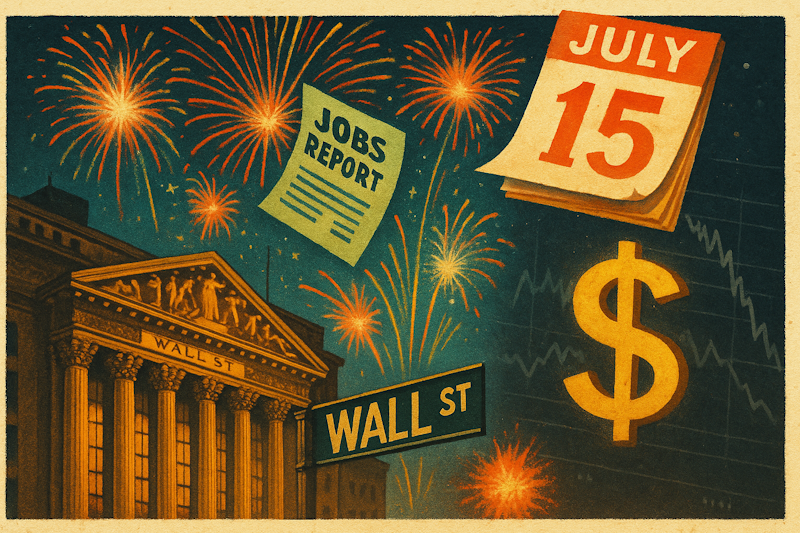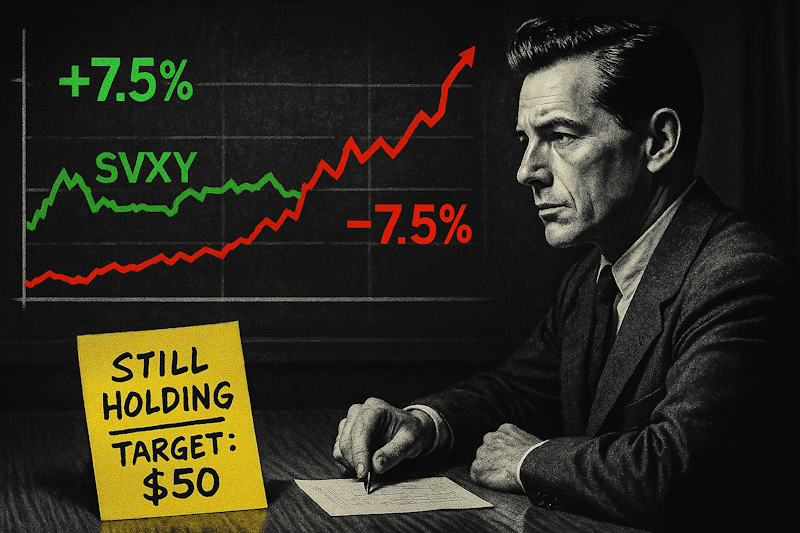Profit Matters, Income Doesn’t
A massive chasm separates financial planning from active investing.
The former dwells in the realm of the known. Tax rules and well-worn rules of thumb fill their tool chest. Even investment decisions amount to nothing more than a reliance on what seemingly worked in the past. And the truly successful adeptly holds client’s hands while convincing them to let history guide them.
On the other hand, active investing and the prosperity it leads do not reside in the rear-view mirror. It demands a forward-looking mind. One that dares stare into an opaque future armed only with the courage of its convictions.
And it’s your courage to look forward that will build the financial future you deserve. So, when the founding partner of the financial planning firm at which I worked a few years back told me, “Just think of me like a scared little squirrel trying to protect his stash of nuts,” I knew I dwelled among minds very different from my own.
Now, the rear-view mirror works reasonably well with day-to-day or even year-year advances in a straight line. But no straight line runs through future shock territory. And conviction is key to moving profitably from one step to the next.
And there are few convictions I hold that I believe will prove indispensable while navigating The Age of Disruption…
Income is an accounting convention. Subtract all expenses from revenue and the remainder is income. But that income tells you nothing about how much capital it took to generate that income.
Capital is things like building the infrastructure, developing the products, performing research and development, and building a brand. The company invested money to build that capital. That money came from investors. And those investors had a choice about handing money over to the company in the first place.
Therefore, for those investors to deem their investment a success, the company needs to provide a return on those capital investments greater than what the investors could have earned otherwise. They passed on other opportunities to invest in a specific company, and those forgone opportunities represent a cost – an opportunity cost.
So, you need to also account for the opportunity cost of that capital and then deduct that cost from a company’s income before you can gauge the level of profitability.
That’s how a company adds value. You can read more about it in my “How to Pick Value Creators” guide. And when they do a great job consistently adding more value than most other companies, shareholders get rewarded with a rising stock price.
Keep in mind, this approach to finding value creators has nothing to do with growth vs. value stocks. But it has everything to do with a rising vs. falling stock price.
Now, that’s bottom-up, company by company conviction.
My next conviction provides a view from the top.
You Can’t Print Prosperity
The pressure on governments to keep the economic flywheel turning grows daily.
It’s a problem of their own making. And their only response is to do more of what they did in the first place to create the problem.
During the Great Financial Crises, they stepped in with nearly $1 trillion in stimulus. Now, to patch over the costs of their response to COVID-19 (which was just one of many inevitable crises that could have cropped up) it will take several trillion dollars and possibly $10 trillion or more.
The cost to maintain order is spiraling out of control. And the money spent does very little to create value adding activity.
Paying people not to work doesn’t add to productive capacity. Sending monthly stimulus checks to people whether they work or not doesn’t either. And how much money earmarked for “infrastructure spending” and “social benefits” will find its way into anything that adds any value at all.
Certainly, you can’t look to the governments track record for confidence that they know how to invest. Add to this the crony capitalism that defines the nexus of government meddling in the economy, and my confidence in government stimulus creating the conditions for prosperity falls even further.
As that proves insufficient, you can bet that the Fed will resort to even more money printing, probably under the guise of Modern Monetary Theory, or MMT.
Whether the result is inflation, hyperinflation, or stagflation, the inevitable result of these artificial prosperity measures is simply more money chasing less goods.
And you can’t truly prosper unless you take steps to protect yourself from that inevitability.
The flip side of the top-down “You Can’t Print Prosperity” conviction is “Prosperity comes from the bottom up.” Either way you look at it, it’s clear that bottom-up incentives are getting squeezed out by top-down mandates.
Which brings me to another key conviction.
Incentives Matter. Intentions Don’t.
The real breakthrough in Bitcoin was that it created an incentive to secure transactions and prevent double spending. And programmatically creating incentives is what any true crypto solution provides.
But when it comes to the furious level of ESG (Environmental, Social, and Governance) hype surrounding us today, I see a lot of good intentions creating very poor incentives.
Not that there aren’t companies out there that deliver a high ESG impact while also generating more profits. But the poor incentive structures lead to more greenwashing than green impact.
I’ll talk more about the ESG trend next week. But I want you to know that these convictions – among others – provide a compass to help you navigate the non-linear path through the Future Shock landscape we’re entering right now.
It won’t be the straight line of the past. And rather than be a squirrel working furiously to protect yesterday’s stash of nuts, I determined years ago to spend my efforts building upon the future.
And finding like minds with whom I can build that future together is why I launched The Prosperity Project in the first place. I hope you will join me.



